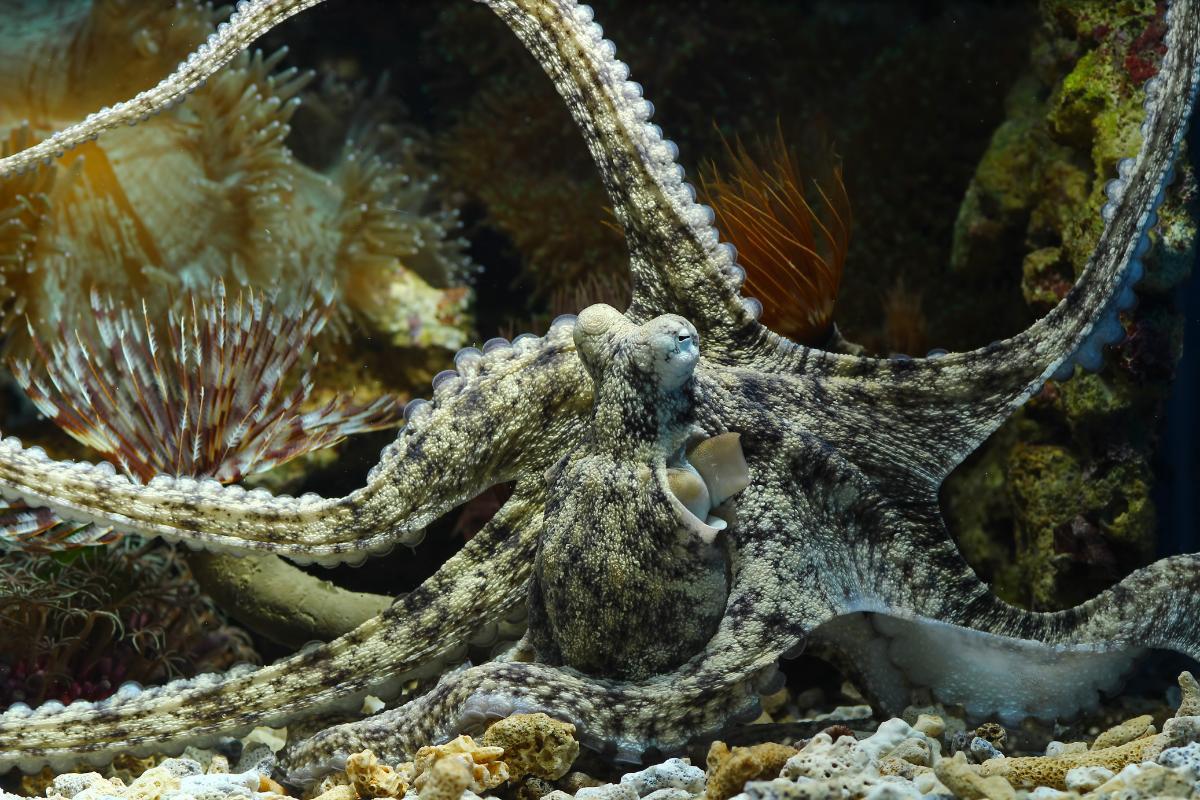What Are Chromatophores and How Do They Work?


Chromatophores are specialized cells that contain internal pigments that reflect light. The functions of chromatophores include camouflage, communication and protection against ultraviolet radiation. There are different types of chromatophores, including melanophores, erythrophores, xanthophores, iridophores and leucophores. Animals with chromatophores include cephalopods which use them to blend into their surroundings and confuse predators. Chromatophores are not only present in animals. Some bacteria contain photosynthetic pigments that allow them to carry out photosynthesis.
At thedailyECO, we learn more by asking what are chromatophores and how do they work? In addition, we learn about these skin pigment cell types, functions and classifications to better understand how they advantage certain organisms.
What are chromatophores?
Chromatophores are specialized cells that produce color and often contain internal light-reflecting pigments. They are found in a variety of organisms such as amphibians, fish, certain crustaceans, bacteria and some cephalopods. Notably, mammals do not have chromatophores. Instead, they have melanocytes, the cells used to produce human skin color.
They play an important role in skin coloration and eye pigmentation in ectothermic animals, i.e. animals which ar eunable to produce sufficient heat internally. Chromatophores also aid in neural crest formation during embryonic development. Mature chromatophores can be classified into several categories based on the color they reflect under white light.
Learn about perhaps the most famous animal which uses chromatophores with our article asking what causes chameleons to change color?

Function of chromatophores
Although the specific function of chromatophores may vary depending on the organism, they are generally known to fulfill several important functions. These functions of chromatophores include:
- Camouflage: chromatophores can change color to help the organism blend into its environment, providing protection from predators or allowing them to stalk prey more effectively.
- Communication: some organisms use changes in chromatophore coloration as part of their communication system. This can be used to attract potential mates, warn other individuals of danger or establish social hierarchies, among many other communication needs.
- Protection against ultraviolet radiation: in certain cases, the pigments present in chromatophores can act as protectors against ultraviolet radiation. They can help to protect organisms from damage caused by excessive exposure to the sun, something very beneficial to animals in very hot climates.
Learn about another way animals can create colorations with our article asking how does bioluminscence work?

Types of chromatophores
According to their specific attributes and particular functions, the types of chromatophores are classified into:
- Melanophores: they carry dark pigments such as melanin which are capable of being dispersed or added to modify the tone of the organism's skin. They are responsible for changes in skin color associated with camouflage and defense against ultraviolet radiation. Lack of melanin is caused by mutations and results in albinism.
- Erythrophores: this type of chromatophore contains reddish pigments such as astaxanthin. They are responsible for the red and orange tones seen in the skin of certain animals, notably in marine animals such as fish and crustaceans.
- Xanthophores: these chromatophore types carry yellow pigments, such as pterin or carotenoids. They give yellowish or orange tones to the organism's skin.
- Iridophores: responsible for the iridescent and metallic tones seen in certain animals, such as certain fish and reptiles. These chromatophores house microscopic structures that selectively reflect light, producing vivid and fluctuating colors.
- Leucophores: Unlike the other types of chromatophores, leucophores lack colored pigments and instead efficiently reflect light. This results in a white or silvery appearance. They are crucial for generating contrasts in the color patterns of some animals.
Learn more about marine animals which use chromatophores with our article on what are pelagic fish?
How do chromatophores work?
As specialized cells, chromatophores work on a cellular level. The intracellular activity allows for the observable skin or other tissue of the animal to produce color. They contain types of cell organelles known as vesicles or sacs which allow for this coloration and any subsequent changes to it.
Chromatophores have muscle-like structures which expand or contract their organelles which contain pigments. With this in mind, we look at how chromatophores work:
- Stimuli: external stimuli in their environment activates the nervous system of the animal and sends a signal to the chromatophores. This external stimuli could be light changes, temperature alterations or appearance of a predator, among others.
- Regulation: neural regulation uses the impulses from the external stimuli to contract or relax the radial muscle-like structures of the chromatophore.
- Pigment dispersal: by expanding, the organelles make it easier for the pigment in the cells to be seen. By allowing more light to reflect off the pigment, the color appearance changes externally.
- Pigment reduction: if the stimuli causes the organelles to contract, the pigment can no longer be seen as strongly. This changes the organisms visible color.
This is the general process of how chromatophores work. In the next sections, we look at certain organisms with chromatophores to see how they work in their specific cases.
Cephalopod chromatophores
Cephalopods are recognized for their ability to rapidly modify both the color and texture of their skin in a sophisticated manner. They use the chromatophores present in their skin to blend in with their surroundings, confuse predators or attract potential mates.
Among the cephalopods of the Coleoidea subclass, there are highly developed multicellular organs that allow them to change color quickly. This is seen in squid, cuttlefish and certain octopuses. Each chromatophore unit consists of a single chromatophore cell, accompanied by multiple structures such as muscles, nerves, glial cells, and sheath cells.
Within the chromatophore cell, the pigments are contained in an elastic sac called the cytoelastic sacculus. To change its color, the individual alters the size or shape of this sacculus through muscle contractions. In turn, this modifies the translucency, reflection or opacity of the pigments.
Octopuses possess a complex chromatophore system capable of generating different chromatic wavelengths, resulting in rapidly changing coloration patterns. The nerves that control these chromatophores are thought to be located in the brain, in an organization that corresponds to the chromatophores themselves. This means the pattern of color change is synchronized with neuronal activation. Like different types of chameleons, cephalopods employ color change as a means of social communication. In addition, they are experts in adapting to their environment, being able to mimic their appearance in both color and texture exceptionally precisely.
Learn more about cephalopods with our article on the differences between squid and cuttlefish.

Chromatophores in bacteria
In bacteria, chromatophores are considered organelles since they are themselves intracellular structures within the unicellular bacterial organism. The chromatophores present in phototrophic bacteria that harbor photosynthetic pigments originate from invaginations in the cytoplasmic membrane. The shape of these organelles varies depending on the bacterial species:
- They may appear as empty vesicles.
- In other species, they are formed by layers of concentric folds, arranged as parallel sheets close to the cytoplasmic membrane.
- They can also be organized in the form of tubules, individually or grouped in bundles.
These chromatophores represent an adaptation to increase the membrane surface available to carry out the functions of photosynthesis and are composed of pigments such as bacteriochlorophyll and carotenoids. In purple bacteria such as Rhodospirillum rubrum, light-harvesting proteins are intrinsically found in the membranes of chromatophores. On the other hand, green sulfur bacteria have evolved a specialized antenna complex called the chlorosome.
Learn more about the importance of pigments in plant species with our article explaining how photosynthesis works.
If you want to read similar articles to What Are Chromatophores and How Do They Work?, we recommend you visit our Biology category.
- Bagnara, J. T., et al. (1973). Color changes, unusual melanosomes, and a new pigment from leaf frogs. Science, 182, 1034–5. PMID 4748673
- Lascelles, J. (1962). J. gen. Microbiology, ed. The Chromatophores of Photosynthetic Bacteria. Britain.








